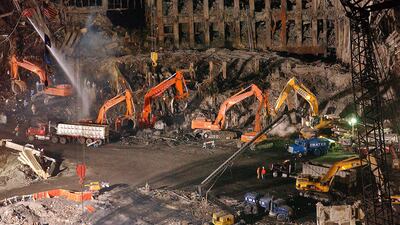Medical examiners in New York have identified the remains of a man killed at the World Trade Center on 9/11 - 16 years after the terror attacks.
In what is the first new identification made since March 2015 in the ongoing investigation, the man - whose name has been withheld at the request of his family - is thought to have been identified using new DNA technology.
The New York City medical examiner’s office uses DNA testing and other means to match bone fragments to the 2,753 people killed by the hijackers who crashed airplanes into the trade center's twin towers on September 11, 2001.
Remains of 1,641 victims have been identified so far. That means 40 percent of those who died have yet to have any remains identified.
New, more sensitive DNA technology was deployed earlier this year and helped make the latest identification after earlier testing produced no results, the medical examiner's office said.
As DNA testing advanced, so has the multimillion-dollar effort to connect more than 21,900 bits of remains to individual victims. Few full bodies were recovered after the giant towers burned and collapsed, and the effects of heat, bacteria and chemicals such as jet fuel made it all the more difficult to analyse the remains.
Over time, the medical examiner's office came to use a process that involves pulverising the fragments to extract DNA, then comparing it to the office's collection of genetic material from victims or their relatives. Most of the DNA profiles generated belong to previously identified victims.
In some cases, scientists have gone back to the same bone fragment 10 or more times, hoping new technology will provide answers.
The 9/11 airliner attacks killed a total of nearly 3,000 people in New York, at the Pentagon and near Shanksville, Pennsylvania.

